Discovering the most unsettling deserted mansions around the globe isn’t a journey for those easily spooked. These forgotten dwellings hold mysteries within their walls, and who knows what you might uncover as you explore their eerie corridors.
Join us as we follow the daring adventures of photographers and urban explorers who’ve ventured into these spine-chilling abandoned homes. Are you up for the challenge?
Bradley-Smith House, Alabama, USA
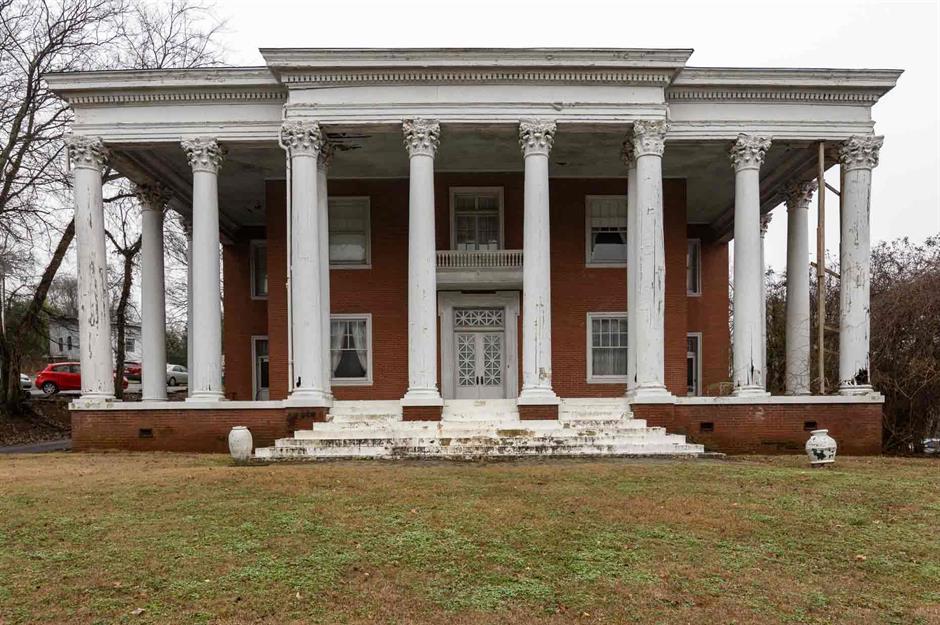
Photographer Leland Kent from Abandoned Southeast has captured the haunting essence of the Bradley-Smith House located in Birmingham, Alabama’s Glen Iris neighborhood. Despite its neglect, this mansion still boasts an awe-inspiring exterior, featuring a two-story wraparound porch, a prominent portico, and fourteen majestic Corinthian columns, leaving a lasting impression on any visitor.
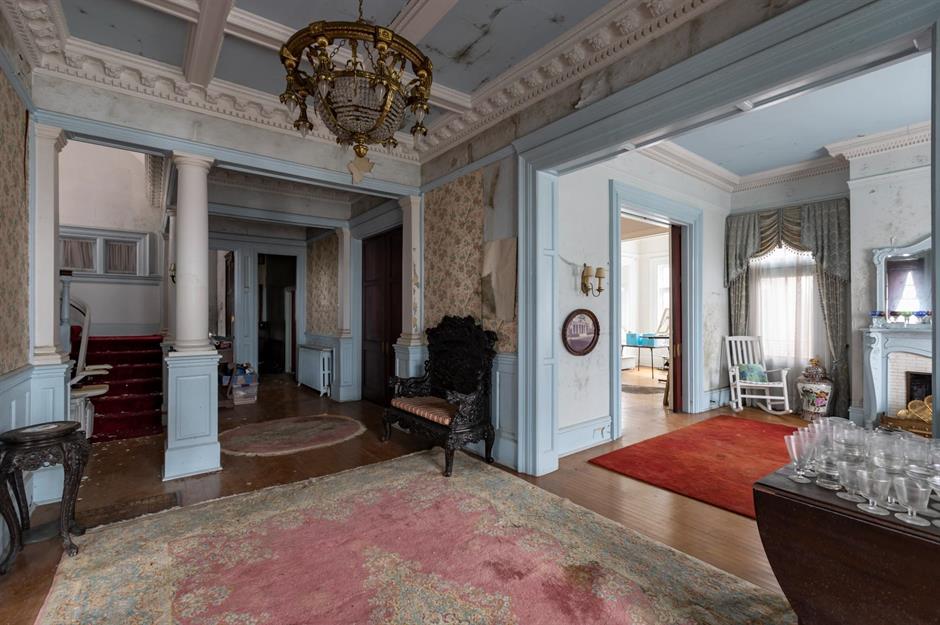
Constructed in 1902 by Thomas Walter III, grandson of the architect renowned for adding the iconic central dome to the US Capitol building, this landmark home was originally commissioned for Lee Carrington Bradley, a well-known attorney in the city. Stepping into the entrance hall feels like a journey back in time, with its magnificent coffered ceiling, internal columns, and neoclassical-style doorways, showcasing the property’s enduring grandeur despite its abandonment.
Tragically, the mansion holds a somber history for the Bradley family. According to Leland Kent, Lee’s son, Thomas Lyons Bradley, met an untimely end at the age of 21 after choking on oyster shell fragments at the kitchen table.

The mansion is a treasure trove of curious artifacts and antiques. One particularly intriguing discovery is a damp-infested room containing what appears to be a wood-carved ornament resembling an Egyptian sarcophagus, possibly a leftover theatrical piece from the previous owners. After Lee’s passing in 1942, the house changed hands to Ollie Dalton Smith and his wife, Carolyn. Smith, a former FBI agent and later a prominent attorney and property developer, resided there until his death in 2016, following Carolyn’s passing in 2003.

Among the many intriguing remnants left behind is a stunning white multi-tiered dress found in one of the upstairs rooms, accompanied by a rack of men’s suits and a bridal photo adorning the mantlepiece, hinting at the mansion’s past occupants. The future of the Bradley-Smith House remains uncertain, especially with the ongoing demolition of historic homes in the area to make room for modern developments. However, efforts by the Birmingham Historic Society to preserve local historic properties offer a glimmer of hope for its potential restoration and conservation.
Château de Dönhoffstädt, Drogosze, Poland
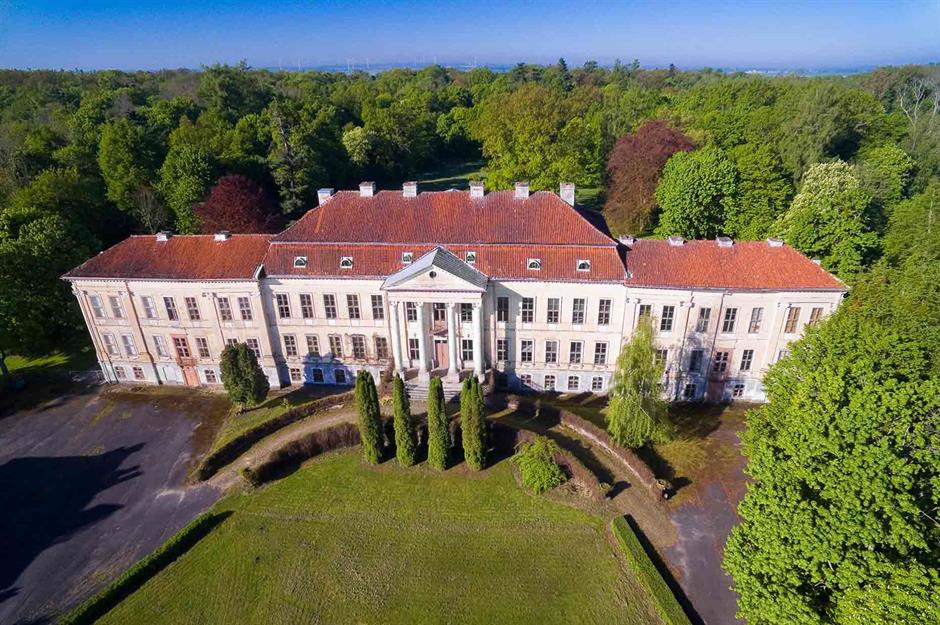
Known as the “East Prussian Versailles,” the Château de Dönhoffstädt is a grand Baroque-style palace situated amidst expansive parklands in the village of Drogosze, located in the northern region of Poland. The property’s history dates back to a previous palace that tragically burned down in the late 17th century. Following this event, Count Bogusław Friedrich von Dönhoff, a Prussian noble, took ownership of the estate and commissioned the construction of a lavish new residence for the Dönhoff family, thus giving rise to the reborn palace, named Dönhoffstädt.
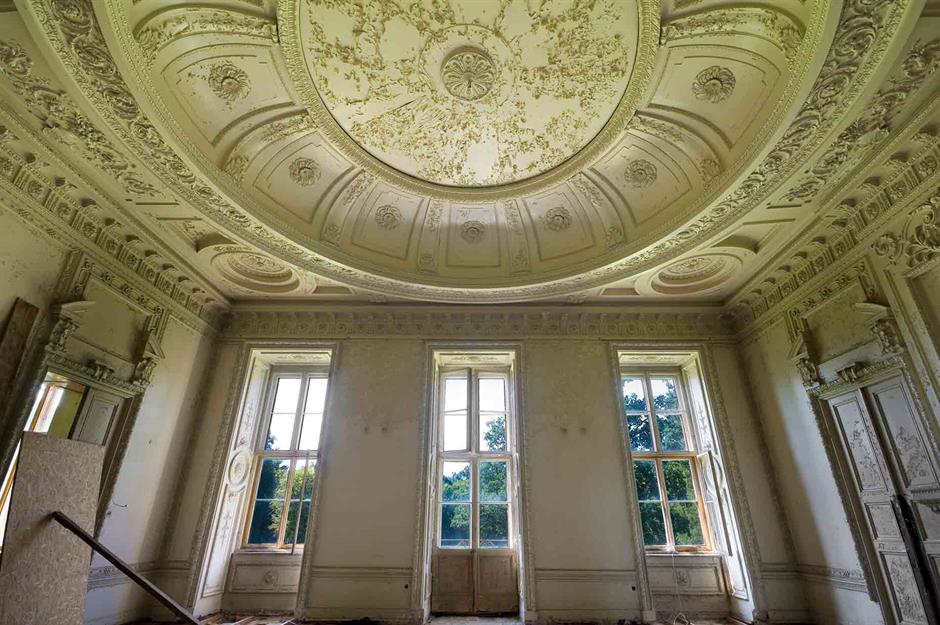
Built between 1710 and 1714, the mansion underwent continuous expansion over the ensuing decades, including the addition of a chapel and extra wings in 1725. The intricate design of the building is steeped in symbolism, with features such as 365 windows representing the days of the year, 52 rooms corresponding to weeks, 12 chimneys for months, and seven balconies symbolizing each day of the week.

Once one of the largest residences in the area, the palace reportedly welcomed numerous notable figures during its prime, including Napoleon Bonaparte and Frederick William IV, the King of Prussia. Its grand ballroom, adorned with a magnificent vaulted ceiling, was once a hub for Prussian high society.
However, the palace’s fortunes took a downturn during the Second World War when its owners chose to vacate the property. In the aftermath of the war, the estate was repurposed as offices for the NKVD, the Soviet Secret Police, leading to looting and the removal of valuable artworks and furnishings.
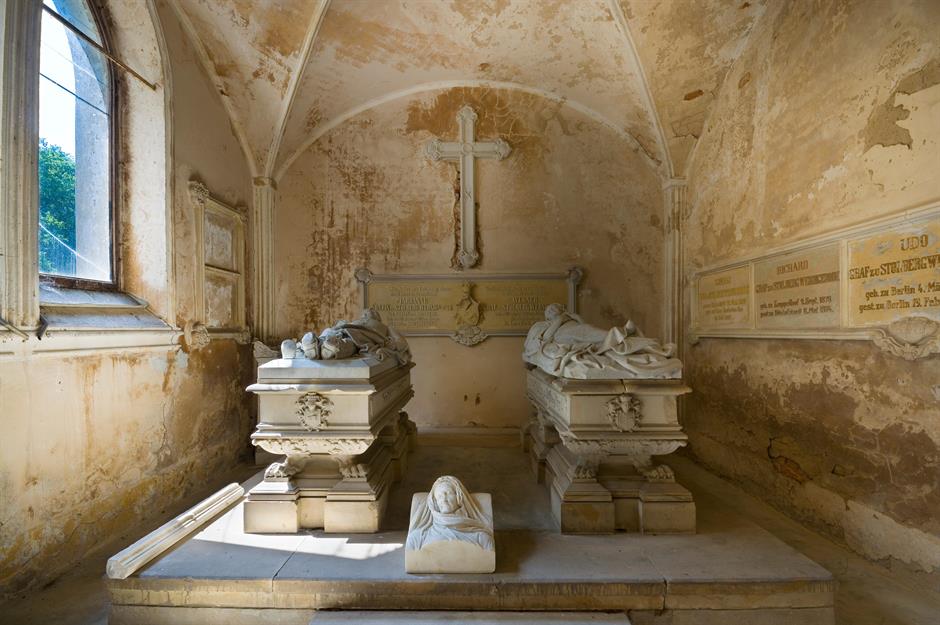
The mausoleum, added in 1889, serves as the final resting place for the Dönhoff family and their descendants, featuring marble sarcophagi and lined with tombstones along the walls. In the post-war years, the grounds were utilized for agricultural purposes, including the establishment of a state farm and an agricultural training center. Purchased by a private buyer in the 1990s, the palace awaits restoration, with the gardens being well-maintained while renovations of the mansion itself are pending.
Rainer-Lewis House, Alabama, USA
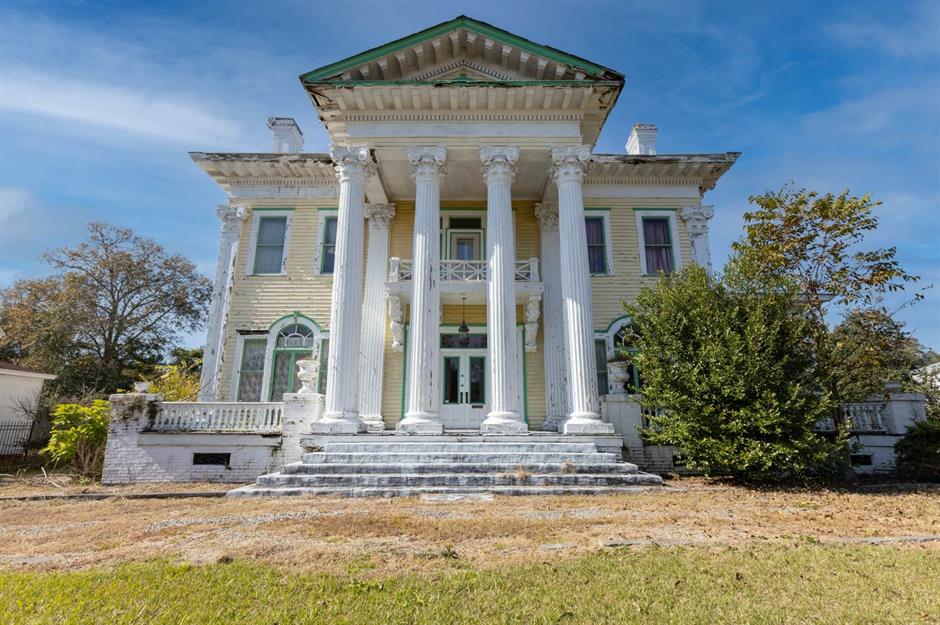
Nestled in the heart of the Deep South, specifically Union Springs, Alabama, the Rainer-Lewis House boasts an awe-inspiring neoclassical design reminiscent of a Roman temple. Captured through the lens of photographer Leland Kent, the grandeur of the mansion is evident in its towering Corinthian columns and intricately decorated roof, creating a striking first impression.
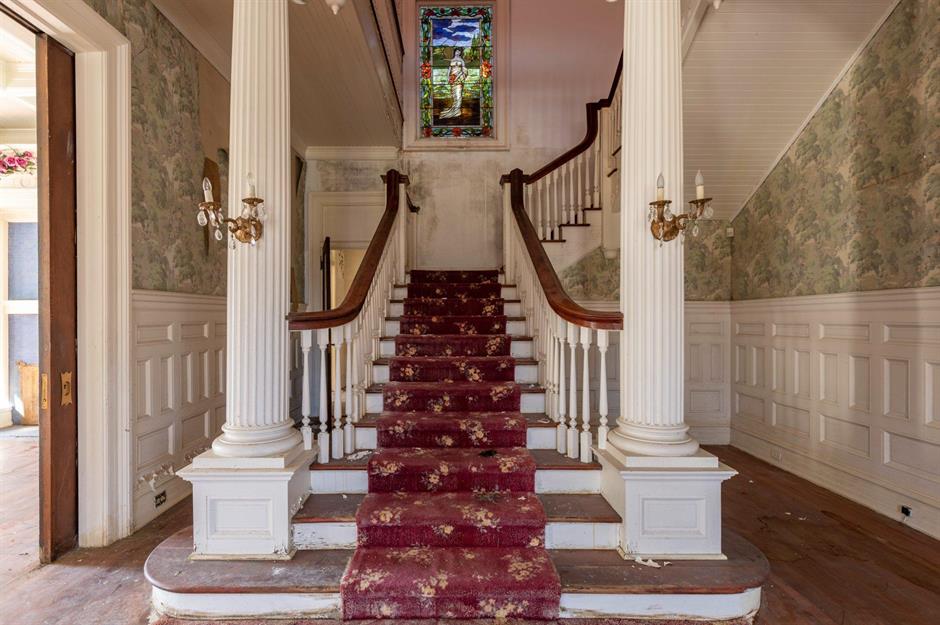
While records vary, it’s believed that construction of this 12-room mansion commenced around 1902 and was finalized two years later. Stepping inside reveals a continuation of the elegant architecture, particularly evident in the expansive entrance hallway. Here, a majestic staircase adorned with meticulously crafted columns draws the gaze, surrounded by the pleasing symmetry of the interior. Despite the initial impression of grandeur, signs of neglect begin to emerge upon closer inspection, with dampness creeping across the walls and peeling paint along the staircase, while dust and debris mar the once pristine red carpet runner.
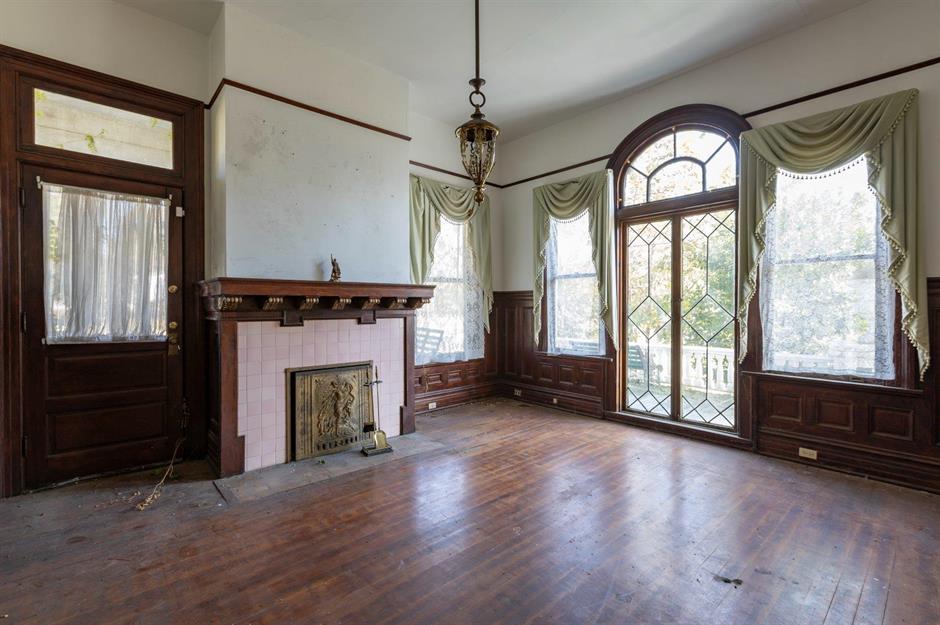
Transitioning from the grandeur of the hallway, the sitting room offers a more intimate space for contemplation. Leaded patio doors and an arched window flood the room with natural light, accentuating the carved wood paneling that adorns the walls. Remnants of the previous owners, including swagged curtains, still linger, adding to the nostalgic charm of the space.
Once home to businessman Sterling Price Rainer Jr, who later served as a civil court judge and mayor of Union Springs, the house exudes a sense of history and timelessness. Exploring the upper level reveals a bedroom frozen in time, seemingly untouched since the departure of its last occupants. Abandoned shoes on the floor and a wedding gown and tuxedo hanging by the dressing table evoke a poignant narrative of a couple’s unfinished story.
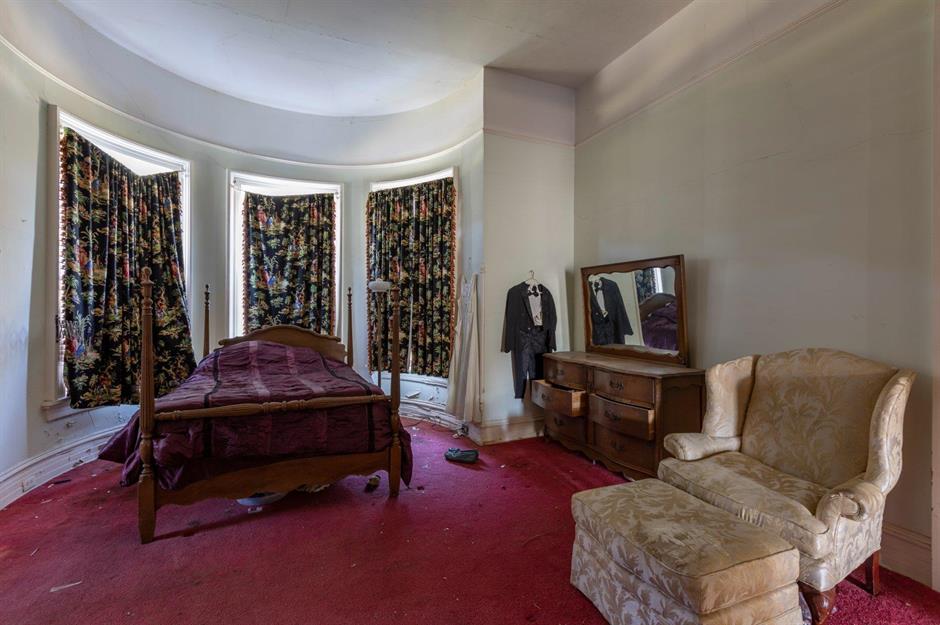
Over the decades, the house changed hands multiple times until it was acquired by its current owner in 2012. Despite reported restoration efforts in 2013, the house was left vacant once again a few years later. As time takes its toll, there’s a collective hope that this remarkable piece of history can be salvaged before it succumbs to irreparable decay.
Pidhirtsi Castle, Pidhirtsi, Ukraine
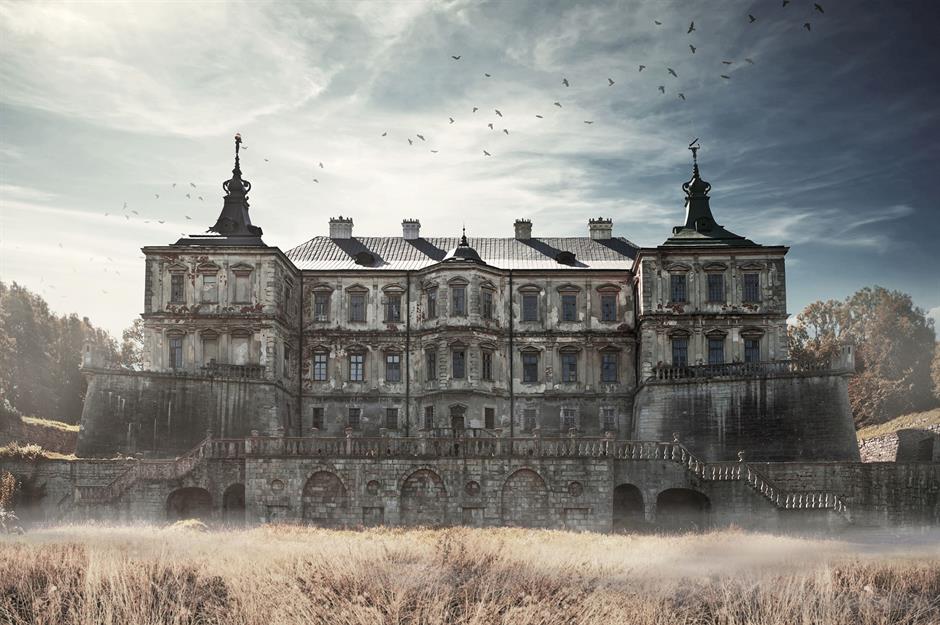
Pidhirtsi Castle, often regarded as Ukraine’s most eerie estate, was originally constructed between 1635 and 1640 for Grand Crown Hetman Stanisław Koniecpolski of the Polish-Lithuanian Commonwealth. Over the centuries, the stately home changed hands multiple times until the onset of the First World War, when Russian forces seized control and pillaged much of its valuable contents.

Countless priceless antiques, paintings, and fixtures, including the castle’s magnificent marble fireplaces, fell victim to looting, leaving the interiors ravaged. This photograph, captured by Edward Trzemeski in the late 19th century, offers a glimpse into the castle’s former glory, showcasing the opulent Crimson Hall adorned with a painted ceiling frieze and gilded accents, illuminated by extravagant chandeliers suspended above a patterned marble floor.
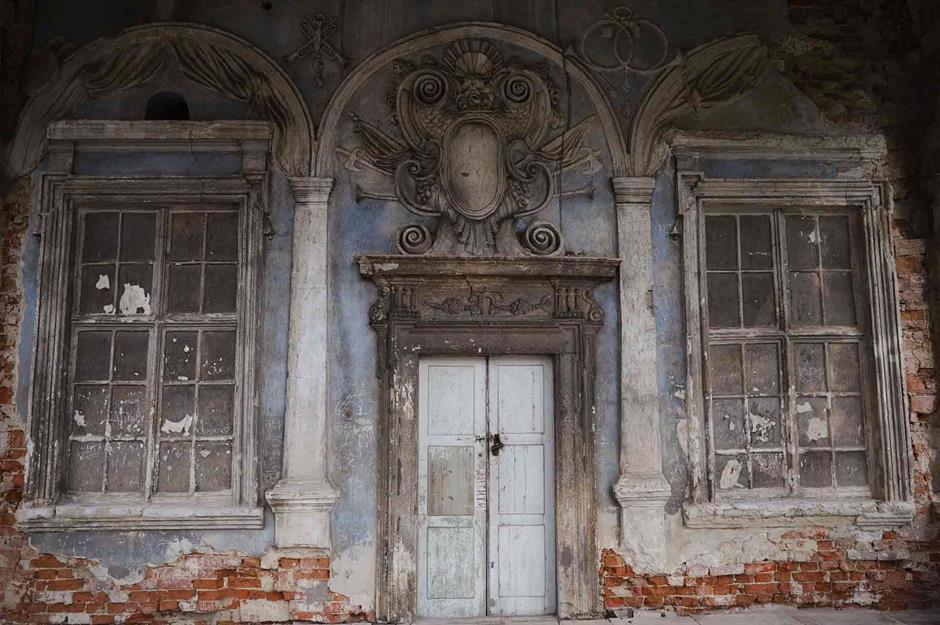
Following the devastation of looting, the castle came under the ownership of Prince Roman Sanguszko of Poland during the interwar period, only to be abandoned again upon the outbreak of the Second World War. Subsequently, it was confiscated by Soviet authorities and repurposed as a tuberculosis sanatorium.
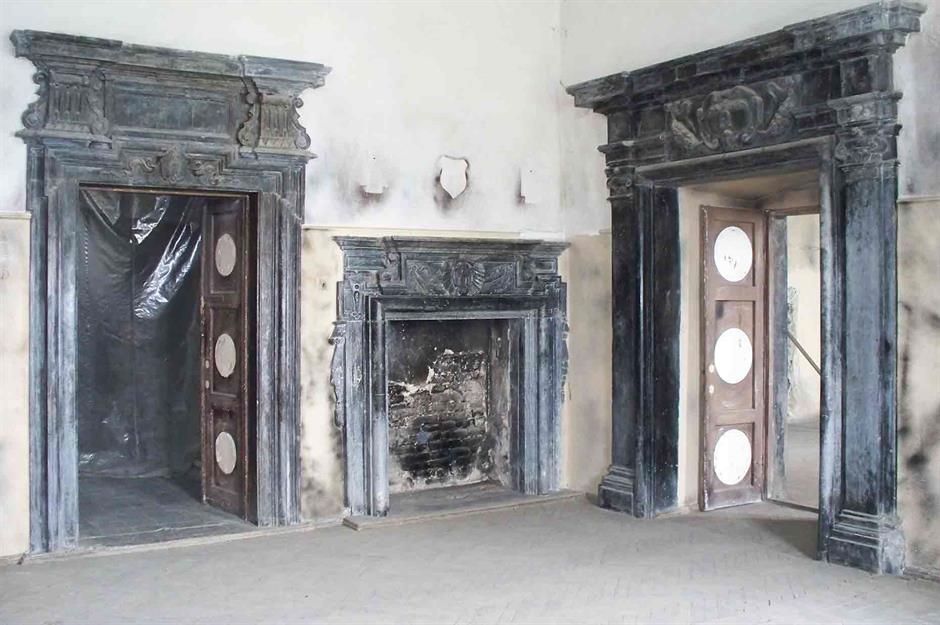
Tragedy struck once more in 1956 when a catastrophic fire engulfed the castle, leading to its abandonment. Left neglected for decades, the derelict palace was eventually purchased by the Lviv Gallery of Arts in 1997 and transformed into a museum. While efforts were made to restore the castle, its current condition remains uncertain in light of the Russian invasion of Ukraine in 2022.
RECOMMENDED: The Historical Rockwell House Renovated And Opened To Public
Dundas Castle, New York, USA
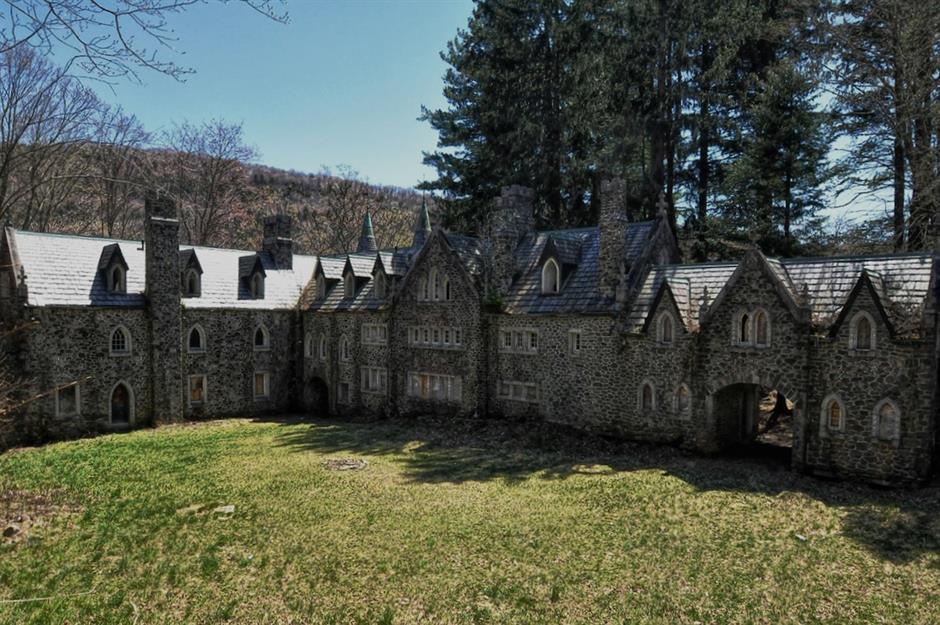
Nestled deep within New York’s Catskill Mountains, Dundas Castle, also known as Craig-E-Clair, carries a somber reputation as the “Castle of Sorrow,” owing to its tragic past. Originally commissioned by wealthy New Yorker Ralph Wurts-Dundas in the late 1910s, the castle’s construction was cut short by Wurts-Dundas’ untimely death in 1921, leaving the grand structure incomplete.
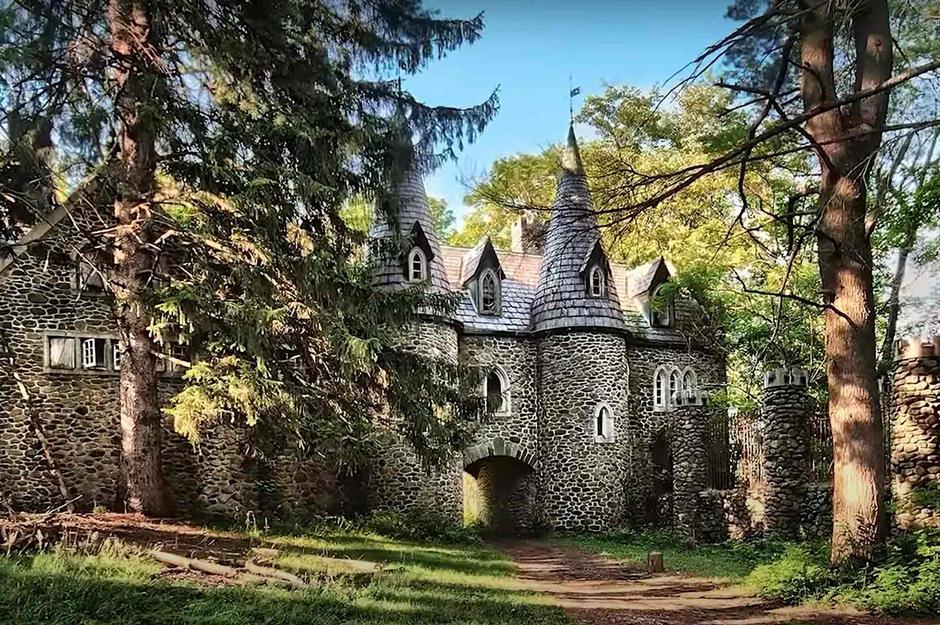
Photographer Walter Arnold captured the castle’s faded grandeur on his YouTube channel, documenting its eerie allure. Following Wurts-Dundas’ passing, his grieving widow Josephine was committed to an asylum, and ownership of the unfinished property transferred to their daughter Muriel. However, Muriel was allegedly deceived out of her inheritance, leading to her relocation to England, where her mental health deteriorated. Despite the initial efforts poured into its construction, Dundas Castle remained a testament to unfulfilled dreams.
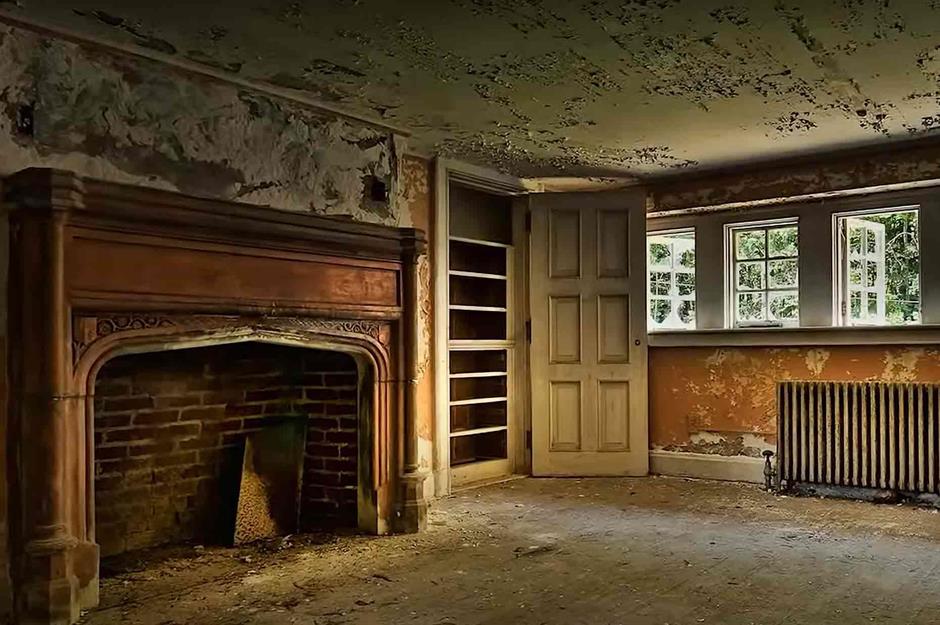
In 1949, the estate of Muriel Wurts-Dundas sold the property, which was subsequently acquired by the Prince Hall Grand Lodge of the Masonic Order. Used as a masonic retreat and holiday camp until the 1970s, the castle gradually fell into disuse, eventually becoming abandoned.
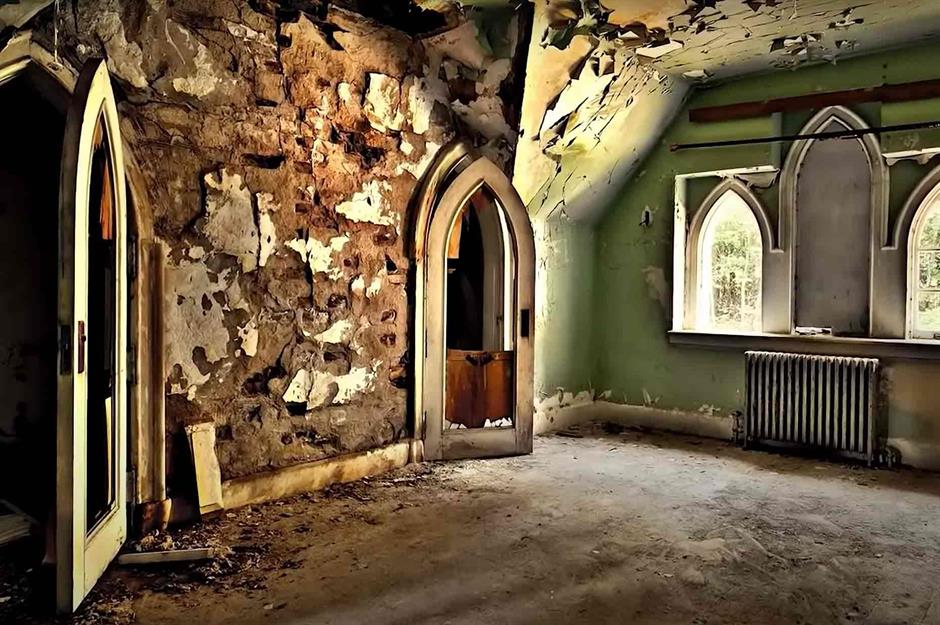
Today, this forsaken castle, recognized on the National Register of Historic Places, stands off-limits to the public, guarded by a caretaker. Legend has it that the ghost of Josephine Wurts-Dundas haunts its halls, adding to its eerie aura. Local lore even speaks of ponds on the estate turning to blood under the light of the full moon, adding to the mystique surrounding this desolate fortress.
Château Burrus, Sainte-Croix-aux-Mines, France
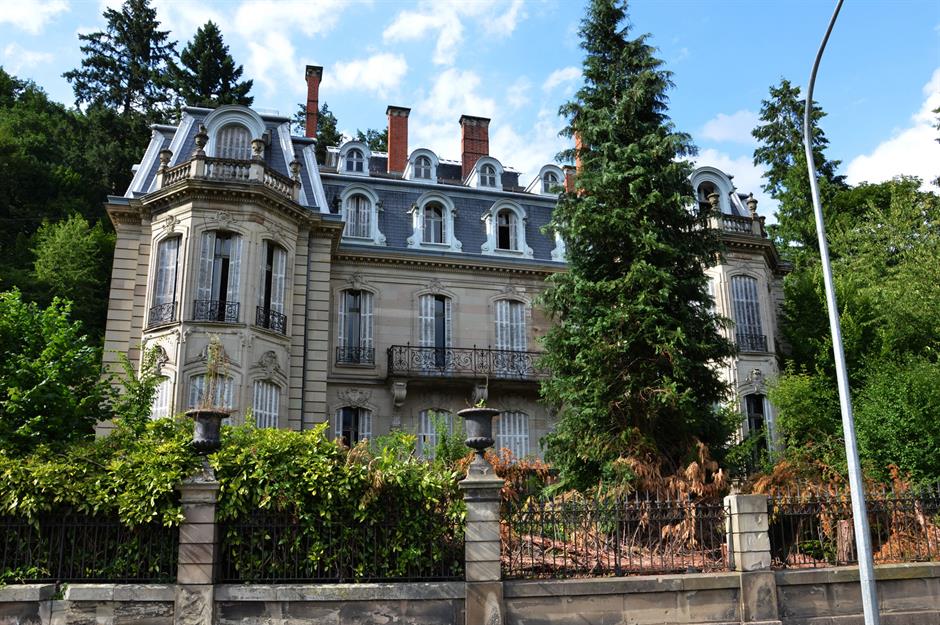
Standing majestically amidst the lush foliage of the French region of Alsace, this impressive yet eerie neo-Baroque château was erected in 1900 for Jules Burrus, a prominent tobacco tycoon and philanthropist. Upon Burrus’s passing in 1911, ownership of the estate transferred to his son Marcel, who retained possession until the outbreak of the First World War, during which Germany’s invasion of France precipitated a series of harrowing events.
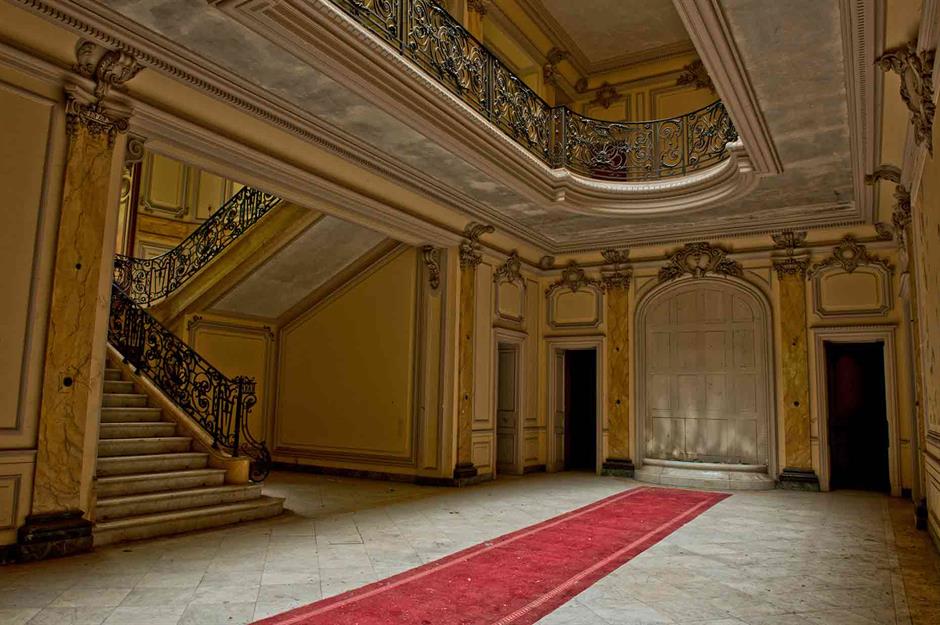
Refusing to acquiesce to the German army’s demands for free cigarettes, Burrus faced reprisal as the château was seized, and he sought refuge in neutral Switzerland. Following the war, Burrus reclaimed his ancestral home, only to endure a similar fate during the Second World War, when the Germans repurposed the château as a training facility for SS officers. Burrus, having spent the war in hiding, regained control of the property in 1945, maintaining ownership until his demise in 1959.
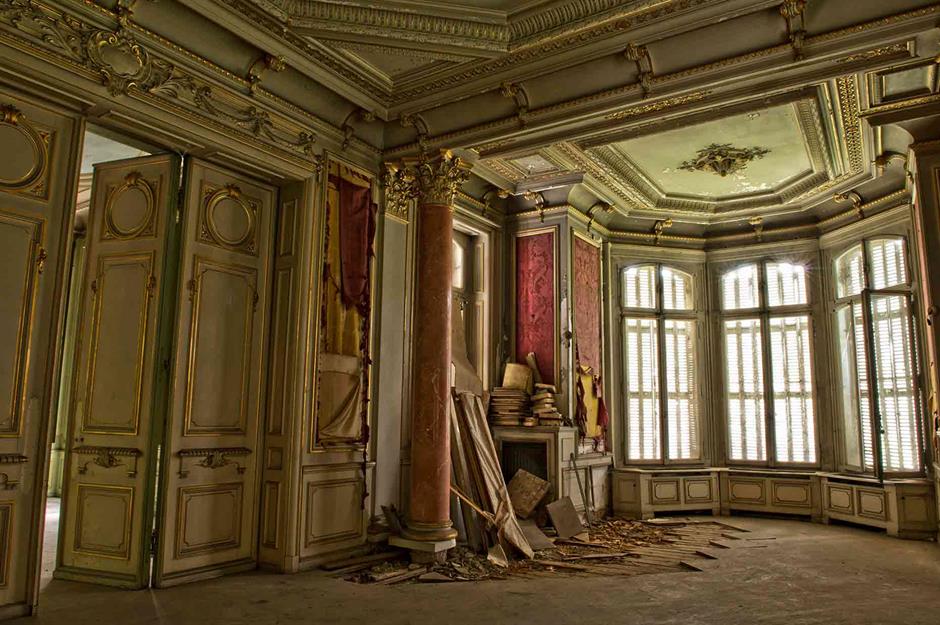
Subsequently acquired by a religious order and later sold, the château fell into disuse in the early 1990s. Despite its dilapidated state, remnants of its former splendor persist, exemplified by the resplendent bay window adorned with silk brocade wallpaper and intricate gilded molding.
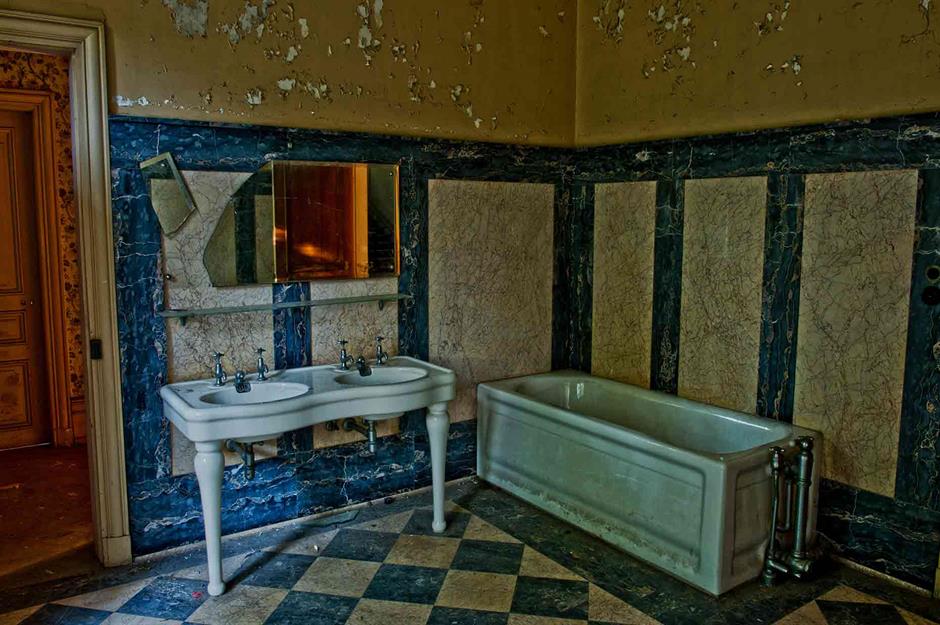
Dubbed Château Lumière for its luminous interiors, the abandoned mansion has languished largely unattended for the past three decades, becoming a victim of vandalism and decay. Its architectural grandeur remains, but a comprehensive restoration effort is urgently needed to revive this once-glorious edifice.
Mystery Mansion, New York, USA
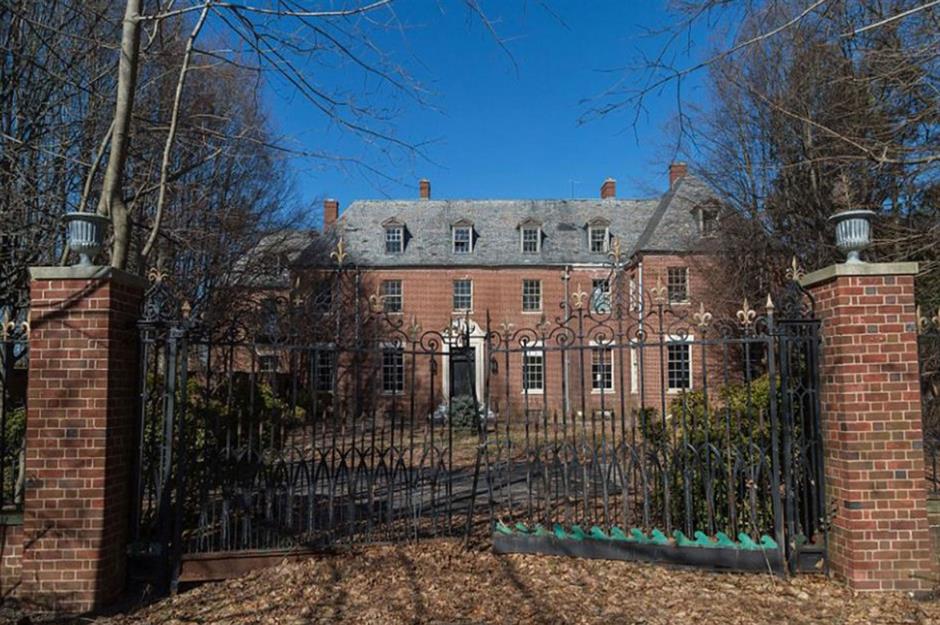
This mysterious mansion, shrouded in secrecy and located just a stone’s throw away from the bustling streets of New York City, was unveiled to the lens of renowned abandoned buildings photographer Bryan Sansivero in 2016.
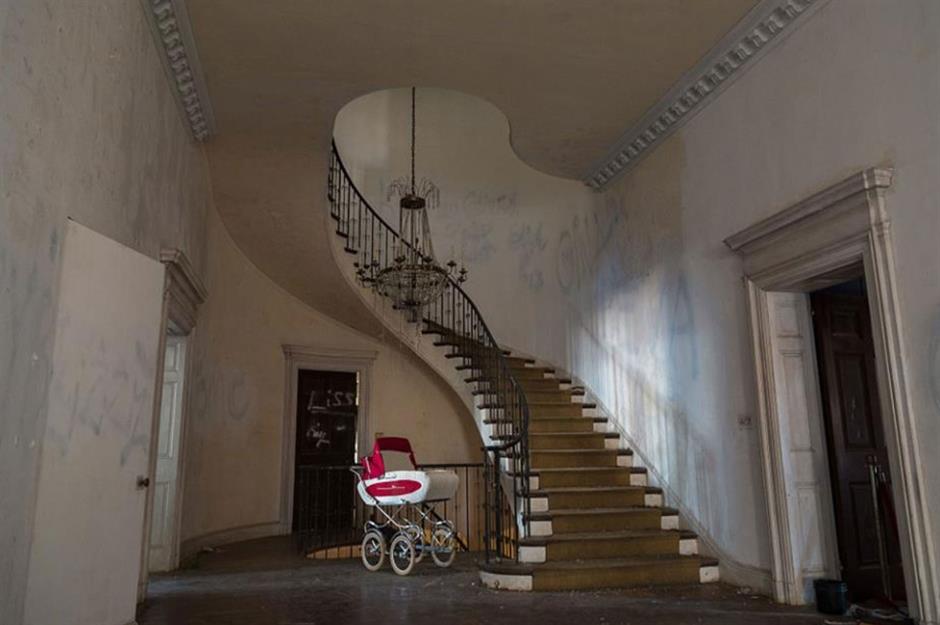
Dating back to the 1930s, this 57-room marvel has been frozen in time since its abandonment in 1976 by its enigmatic owner, notorious for acquiring grand residences only to let them decay into obscurity. With its eerie ambiance reminiscent of a scene from a horror film, the mansion stands as a haunting relic of the past.

Despite the passage of decades, much of the mansion’s opulent fixtures and furnishings, including grand pianos, antique sofas, marble fireplaces, and crystal chandeliers, have been left to languish in neglect within its cavernous drawing rooms.

While the ravages of time have taken their toll, evidenced by peeling paint, broken windows, and graffiti defacing some walls, the mansion surprisingly retains much of its structural integrity. Despite its state of disrepair, this unsettling abode continues to captivate imaginations, offering a glimpse into a bygone era frozen in time.
Château de Vyle-et-Tharoul, Vyle-et-Tharoul, Belgium
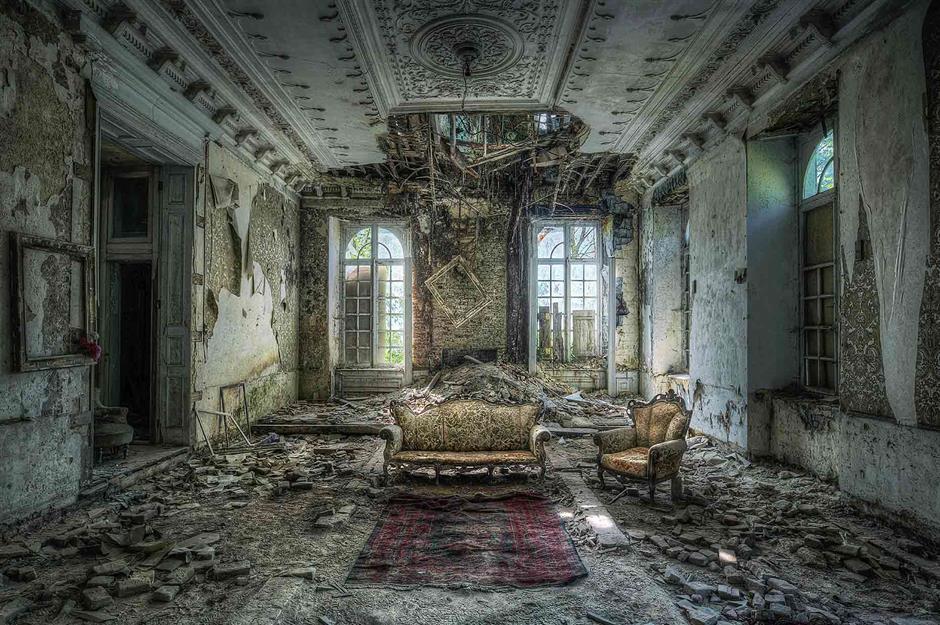
With origins tracing back to the late 18th century, this magnificent Louis XV-style château stands proudly in the tranquil Belgian village of Vyle-et-Tharoul. While its initial construction dates back to this period, the château underwent significant reconstruction during the 1820s under the ownership of the prosperous Lamarche-Francotte family, who, much like the Burrus clan, amassed wealth through the tobacco trade.
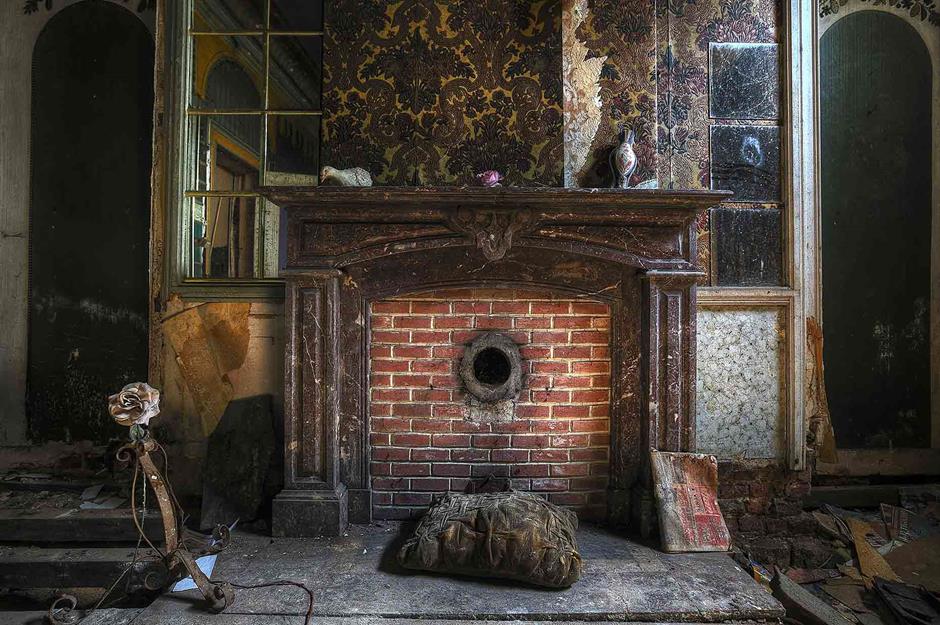
Dubbed Château Congo, the estate later came into the possession of Count Alphonse de Meeus, remaining within the esteemed de Meeus family until the tumultuous era of the Second World War, during which it fell under Nazi occupation. Following the war, American forces assumed control of the château upon the German Army’s retreat from Belgium.
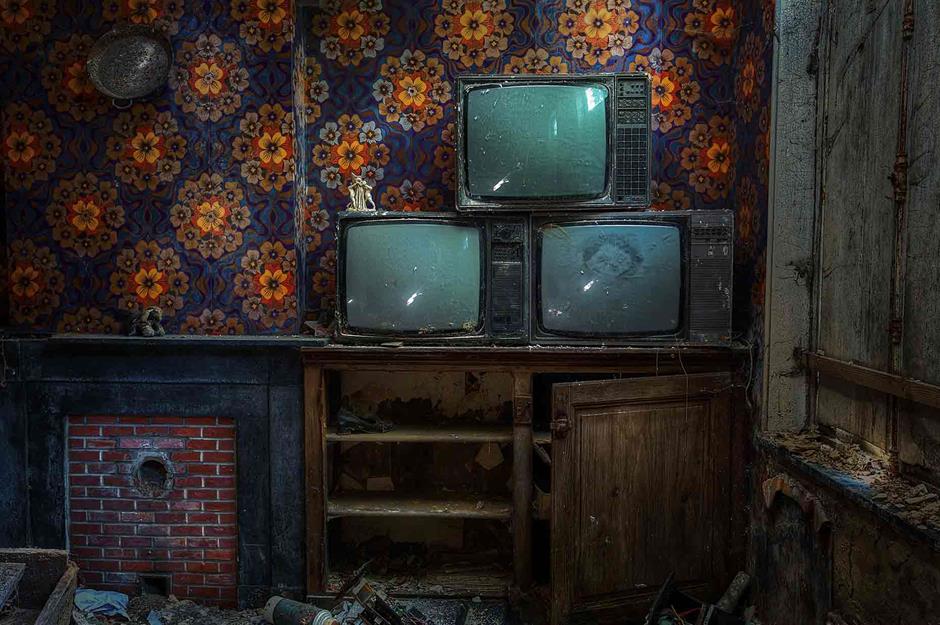
Subsequent ownership transitions saw the château acquired by an entrepreneur who had amassed a fortune in Africa, hence the alternative moniker, yet financial misfortune led to neglect and eventual abandonment of the property in 2010.
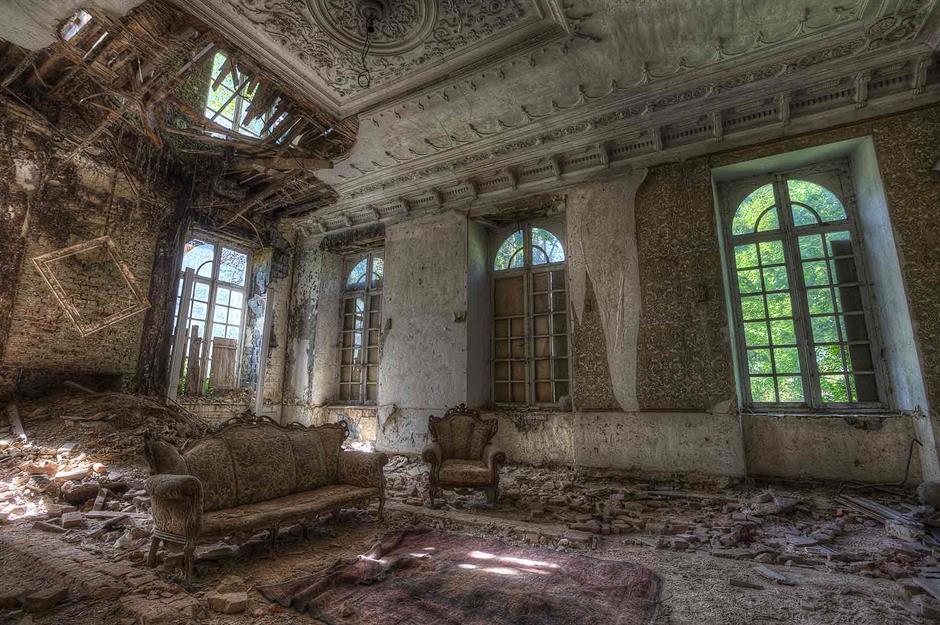
However, this tale takes a positive turn as in 2016, local public works company Cop & Portier stepped in, acquiring the château with plans to transform it into 15 luxurious apartments. While the current status of the project remains uncertain, the acquisition offers a glimmer of hope for the restoration and rejuvenation of this once-stately château, ensuring its preservation for generations to come.
Harley Clarke Mansion, Illinois, USA
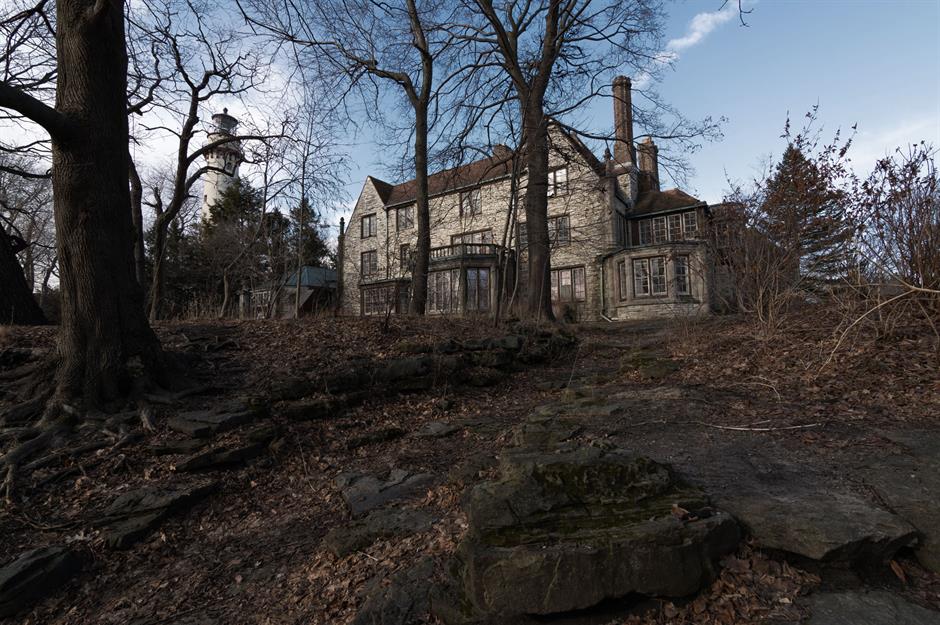
Nestled on the shores of Lighthouse Beach in Evanston, Illinois, stands a commanding French Eclectic-style mansion, erected in 1927 for the esteemed utility magnate Harley Clarke. With its imposing limestone façade and sprawling 16-room layout, the mansion exudes grandeur, overlooking the picturesque expanse of Lake Michigan.
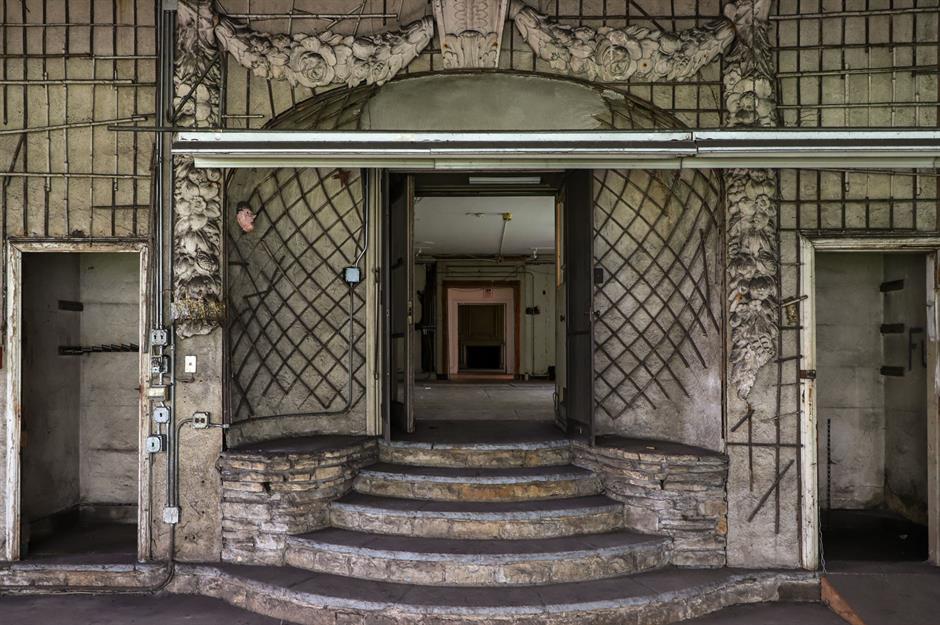
Harley Clarke and his family called this architectural gem home until 1949 when financial hardships stemming from the Great Depression forced him to part ways with his beloved abode, selling it to the Sigma Chi fraternity. Subsequently, the fraternity relinquished ownership to Evanston’s City Council in 1964, leading to the mansion’s transformation into the Evanston Art Center.
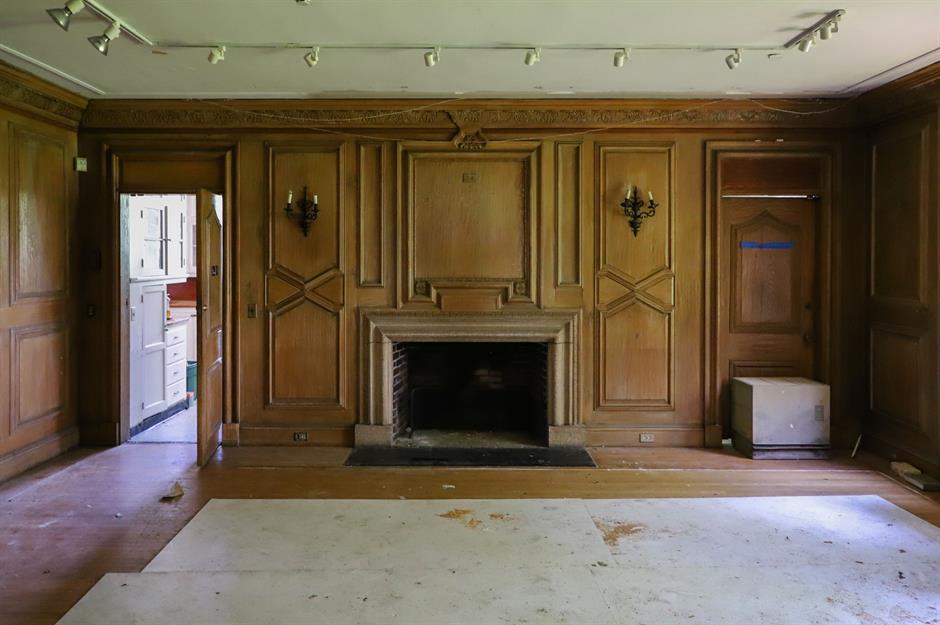
Following the relocation of the nonprofit art organization in 2015, the mansion fell into disrepair, yearning for rejuvenation. Despite facing imminent demolition in 2018, a unanimous decision by the Evanston Preservation Committee spared the historic structure from destruction.
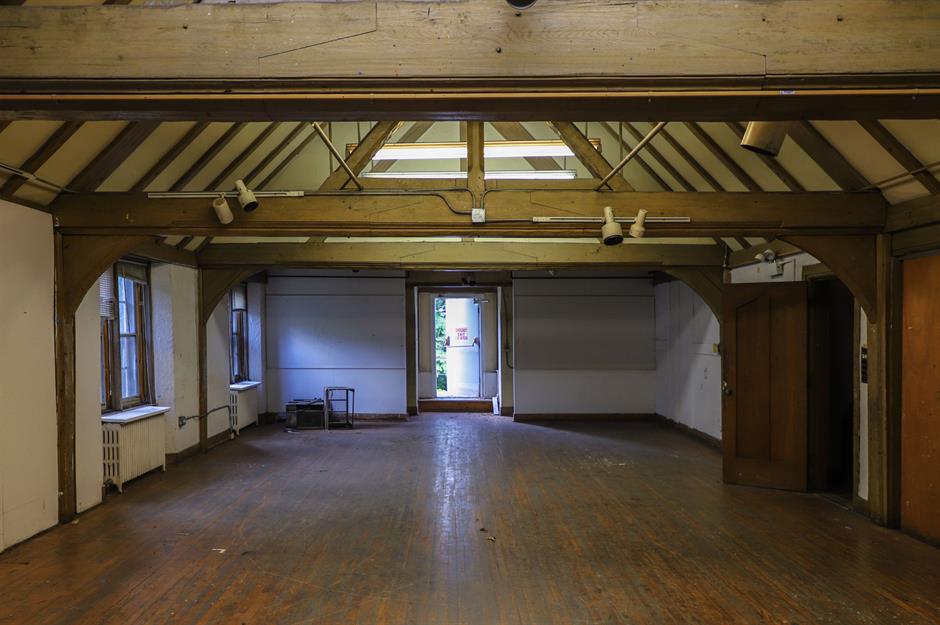
Hope was reignited when Artists Book House, co-founded by author Audrey Niffenegger, envisioned a literary sanctuary within the mansion’s walls, offering a space for writing workshops, a gallery, and a café. However, the ambitious project encountered setbacks, ultimately culminating in its abandonment in September 2023 due to challenges in securing the necessary funds for the extensive renovation required to revive this architectural treasure.
RECOMMENDED: Abandoned Hoarder Houses That Are Full To The Brim